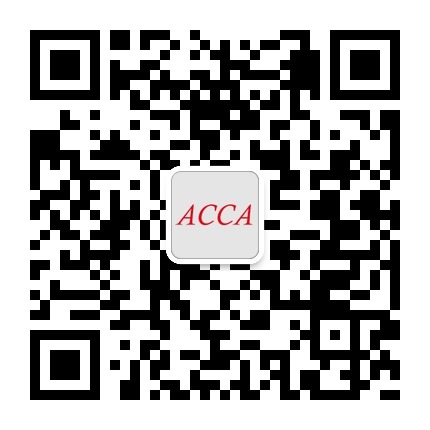



1、凡本網站注明“來源高頓教育”或“來源高頓網校”或“來源高頓”,的所有作品,均為本網站合法擁有版權的作品,未經本網站授權,任何媒體、網站、個人不得轉載、鏈接、轉帖或以其他方式使用。
2、經本網站合法授權的,應在授權范圍內使用,且使用時必須注明“來源高頓網校”或“來源高頓”,并不得對作品中出現的“高頓”字樣進行刪減、替換等。違反上述聲明者,本網站將依法追究其法律責任。
3、本網站的部分資料轉載自互聯網,均盡力標明作者和出處。本網站轉載的目的在于傳遞更多信息,并不意味著贊同其觀點或證實其描述,本網站不對其真實性負責。
4、如您認為本網站刊載作品涉及版權等問題,請與本網站聯系(郵箱fawu@gaodun.com,電話:021-31587497),本網站核實確認后會盡快予以處理。
隨著世界經濟的不斷發展,越來越多的國內企業開始尋求與國際接軌。也正因如此,作為國際比較領先的專業會計師團體,ACCA越來越受到國內企業的認可和...
2020-01-19由于ACCA考試奉行寬進嚴出的考試政策,所以在校大學生也是完全能夠滿足ACCA報考條件的。 報名注冊ACCA考試,具備以下條件之一即可: 1)凡具有教育部承...
2020-01-19國際注冊會計師,簡稱ACCA(特許公認會計師公會),是世界上規模大、發展快的國際專業會計師組織,ACCA證書也被認為是ACCA含金量高的財經證書之一。ACCA協...
2020-01-17ACCA考試最好還是參考新教材比較好。 ACCA大概四五年換一次大綱,每次大綱轉變后有些課可能會被取消,然后有些新的課程會加進去。07年底就進行了一次...
2020-01-17很多考生都會擔心統一閱卷會造成考試成績評分出錯,對此,要提醒大家,ACCA政策里是允許我們進行查卷的。 再送大家一個2020ACCA資料包,可以分享給小伙...
2020-01-17ACCA和CPA考試通過率哪個更高呢?哪個證書更容易呢?財會專業的大學生是考ACCA還是考CPA呢?在職人士又應該如何選擇呢?今天高頓ACCA小編就來為大家總結...
2020-01-14ACCA專業就業前景非常好,十分受到重視。取得ACCA資格相當于擁有打開職業發展之門的金鑰匙。其絕大多數學員及會員在外資企業、合資企業、金融機構和...
2020-01-14今天為大家帶來的是IFRS5-非流動資產持有待售及終止經營業務(for ACCA FR)。 再送大家一個2020ACCA資料包,可以分享給小伙伴,自提,戳: ACCA資料【新手指...
2021-07-14國際注冊會計師(ACCA)簡介 ACCA在國內稱為國際注冊會計師,實際上是特許公認會計師公會(The Association Of Chartered Certified Accountants)的縮寫,它是英國具有特...
2020-01-1463題E選項為何不選啊!持有公司發行股份5%前五名股東單位任職人員不能擔任,10%已經大于5%不是應該能擔任嗎?如果不能擔任,范圍是多少
資本公積的計算過程不理解
B為什么不對呢
老師:可以分別和我說一下: 1.非貨幣性資產交換:雙方的入賬價值和差額怎么確認嗎 2.債務重組的:雙方入賬價值和差額分別怎么確認 3.長期股權投資:初始投資成本,初始入賬價值 這幾個概念經常弄暈
77題C選項不是應該1%,為什么C正確
63題E選項為何不選啊!持有公司發行股份5%前五名股東單位任職人員不能擔任,10%已經大于5%不是應該能擔任嗎?如果不能擔任,范圍是多少
資本公積的計算過程不理解
B為什么不對呢
老師:可以分別和我說一下: 1.非貨幣性資產交換:雙方的入賬價值和差額怎么確認嗎 2.債務重組的:雙方入賬價值和差額分別怎么確認 3.長期股權投資:初始投資成本,初始入賬價值 這幾個概念經常弄暈
77題C選項不是應該1%,為什么C正確
ACCA考試分為機考和筆考,目前ACCA的F階段全部采用機考形式,P階段全部為筆考形式。 再送大家一個2020ACCA資料包,可以分享給小伙伴,自提,戳: ACCA資料【新手指南】+內部講義+解析音頻 考前準備: 1.考生須在開始前30分鐘到達ACCA考試地點,由監考老師對考生進行核查考生本人身份證、ACCA注冊號。準考.........
2020-01-21國際注冊會計師簡稱ACCA,ACCA特許公認會計師公會是全球最具規模的國際專業會計師組織,為全世界有志投身于財務、會計以及管理領域的專才提供首選的資格認證。 再送大家一個2020ACCA資料包,可以分享給小伙伴,自提,戳: ACCA資料【新手指南】+內部講義+解析音頻 ACCA自1988年進入中國以來,經歷近30年.........
2020-01-21其實選擇面授課程還是網課的話主要看你個人的學習時間和自己安排的考試進度。 再送大家一個2020ACCA資料包,可以分享給小伙伴,自提,戳: ACCA資料【新手指南】+內部講義+解析音頻 對于有一定的會計基礎的考生、或者在職人士,工作比較忙的,選擇網課的話,相對來說,自己可安排的時間比較靈活。.........
2020-01-21ACCA在國內稱為國際注冊會計師,實際上是特許公認會計師公會(The Association Of Chartered Certified Accountants)的縮寫,它是英國具有特許頭銜的4家注冊會計師協會之一,也是當今知名的國際性會計師組織之一。特許公認會計師公會成立于1904年,是目前世界上領先的專業會計師團體,也是國際上海外學員眾多、學.........
2020-01-19隨著世界經濟的不斷發展,越來越多的國內企業開始尋求與國際接軌。也正因如此,作為國際比較領先的專業會計師團體,ACCA越來越受到國內企業的認可和親睞。很多小伙伴出于自己本專業就業難度問題,也都在考慮報考ACCA從而轉型。那么,作為一門專業的會計體系,ACCA是否可以靠自學通過所有考試呢?.........
2020-01-19ACCA簡介 ACCA是特許公認會計師公會(TheAssociationofCharteredCertifiedAccountants)的簡稱,是目前世界上最領先的專業會計師團體,也是國際學員最多,學員規模發展最快的專業會計師組織。 ACCA當中的Chartered全稱為RoyalCharter,指的是其會員得到英國皇室授予皇家特許名銜,這個只有部分頂尖的組織和機構才會被授予.........
2020-01-09ACCA在國內屬于短缺人才,ACCA資格在國內很有用,在未來10年里,無論在中國還是全球,對具有國際視野的高素質財會人才的需求會繼續增加。 再送大家一個2020ACCA資料包,可以分享給小伙伴,自提,戳: ACCA資料【新手指南】+內部講義+解析音頻 ACCA會員資格也在國際上得到廣泛認可,尤其得到歐盟立法以.........
2020-01-09ACCA分為學員、準會員和正式會員三種類別。在考完所有13門科目之后并通過后即可成為準會員。那么準會員和正式會員的差別是什么呢?是否可以一直保持準會員資格呢? 再送大家一個2020ACCA資料包,可以分享給小伙伴,自提,戳: ACCA資料【新手指南】+內部講義+解析音頻 ACCA會員和ACCA準會員的共同點事.........
2020-01-08在ACCA官網點擊student導航按鈕,在下拉菜單中點擊ACCA qualification,進入后,選擇不同科目,有不同的資料可以下載,包括歷年考題,考官文章,考官報告等。 再送大家一個2020ACCA資料包,可以分享給小伙伴,自提,戳: ACCA資料【新手指南】+內部講義+解析音頻 常用的ACCA資料有: 1.Syllabus and study guide(考綱.........
2020-01-08參與倫敦大學國際專業會計碩士學位項目的ACCA會員/準會員如能順利完成課程并通過考核,即可獲得由倫敦大學(UOL)頒發的會計學碩士學位,但是具體的教學體系和實施由倫敦大學學院(UCL)制定。 再送大家一個2020ACCA資料包,可以分享給小伙伴,自提,戳: ACCA資料【新手指南】+內部講義+解析音頻 申請英國.........
2020-01-08由于ACCA報考時間比較早,有時會因為各種原因需要調整考試時間、場地等,這里告訴大家如何修改考試信息。 再送大家一個2020ACCA資料包,可以分享給小伙伴,自提,戳: ACCA資料【新手指南】+內部講義+解析音頻 acca機考在正常報考日期截止日前,學員都可以進入myACCA的賬戶里去修改考試信息,包括退考.........
2020-01-08ACCA一共要考13門科目,由于科目數量比較多、題目難度也沒那么簡單,很多同學會對ACCA的成績是否存在時間限制抱有疑問。 再送大家一個2020ACCA資料包,可以分享給小伙伴,自提,戳: ACCA資料【新手指南】+內部講義+解析音頻 在成為ACCA會員之前,ACCA考試的時候成績是有有效期的。ACCA有效期新規顯示,.........
2020-01-08ACCA F階段考試一共有9門考試科目,AB、MA、FA、LW、PM、TX、FR、AA、FM分涉及基本會計學原理、管理學原理、管理會計基礎、涵蓋專業財會人員應具備的核心專業技能。 再送大家一個2020ACCA資料包,可以分享給小伙伴,自提,戳: ACCA資料【新手指南】+內部講義+解析音頻 具體科目如下: ACCA考試科目AB《會計.........
2021-05-26國際會計師資格證是什么? 國際會計師資格證書,國際注冊會計師持有的財會證書。而所謂的國際注冊會計師,是國內對ACCA的稱呼,實際上是特許公認會計師公會(The Association Of Chartered Certified Accountants)的縮寫,它是英國具有特許頭銜的4家注冊會計師協會之一,也是當今知名的國際性會計師組織之一。特.........
2021-05-26剛進入大學的同學可能會通過各種途徑了解到ACCA這樣一個財會證書。學長學姐們也會用自己的血淚史來提醒接下來準備入坑ACCA的學弟學妹們,學習ACCA是多么痛苦的一件事!學習ACCA將意味著接下來的幾年大學生涯,大部分時間將要在圖書館里度過了!但是,更讓大家比較好奇的是這樣一張國際財會證書,考出.........
2021-01-07